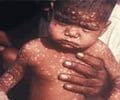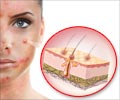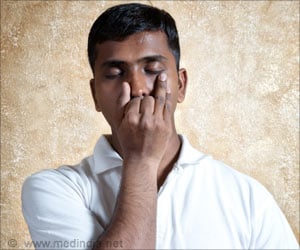June 13 is a day to raise awareness and stand up for the rights of people with albinism.
- International Albinism Awareness Day promotes inclusion and diversity within the albinism community, emphasizing the importance of including diverse groups in discussions related to albinism
- Albinism is a genetic condition that reduces melanin production, resulting in fair skin, light eyes and hair, and increased vulnerability to skin and eye issues
- Individuals with albinism face various challenges in their lives, including financial constraints, limited access to healthcare, stigma, and discrimination. Public awareness about albinism is crucial in addressing these issues
Furthermore, International Albinism Awareness Day sheds light on the various health challenges associated with albinism.
Read More..
Theme for International Albinism Awareness Day: Inclusion is Strength
International Albinism Awareness Day aims to promote inclusion and diversity within the albinism community.This year's theme, "Inclusion is Strength," emphasizes the importance of including diverse groups such as youth, women, children, older persons, LGBTQ+ individuals, and people from different races and ethnic backgrounds in discussions related to albinism.
It also encourages collaboration with the disability movement and seeks alliances with human rights groups and other external organizations.
The day is celebrated on June 13, and you can use hashtags like #InclusionIsStrength, #InclusiveFuture, and #AlbinismDay to join the conversation and spread awareness (1✔ ✔Trusted Source
International Albinism Awareness Day 13 June
Go to source).
History of International Albinism Awareness Day
International Albinism Awareness Day was established on June 13, 2014, by a resolution passed by the United Nation General Assembly.The resolution was led by Ambassador Yusuf Mohamed Ismail Bari-Bari of Somalia, in collaboration with the organization Under the Same Sun. NOAH (National Organization for Albinism and Hypopigmentation) also participated in a U.N. event celebrating the resolution, which was attended by dignitaries from various countries and organizations.
This day serves as a global initiative to promote awareness and advocate for the rights of people with albinism, particularly in Africa, where atrocities against individuals with albinism have occurred (2✔ ✔Trusted Source
Inclusion Is Strength
Go to source).
What is Albinism?
Albinism is aMelanin is a pigment that determines the color of your skin, hair, and eyes, protecting against sun damage and skin cancers.
There are two main types of melanin, eumelanin (dark pigment) and pheomelanin (responsible for red to yellow hues), which vary based on genetics inherited from parents (3✔ ✔Trusted Source
Albinism
Go to source).
Albinism: Causes, Symptoms, and Diagnosis
Causes of Albinism: Genetics and Inheritance
Albinism is a genetic disorder present at birth. It is caused by defects in genes responsible for producing or distributing melanin, the pigment that gives color to the skin, hair, and eyes. This defect can result in either the absence or reduced production of melanin. For most types of albinism, both parents must either have albinism or carry the gene for their child to develop the condition. In some cases, albinism that affects only the eyes can be inherited from a birthing parent (4✔ ✔Trusted Source
About Albinism
Go to source).
Symptoms of Albinism
People with albinism experience the following symptoms:
- Absence of color in the skin, hair, or eyes
- Lighter than normal coloring of the skin, hair, or eyes
- Patches of skin with no color
- Strabismus (crossed eyes)
- Photophobia (sensitivity to light)
- Nystagmus (involuntary rapid eye movements)
- Impaired vision or blindness
- Astigmatism (refractive error of the eye)
Diagnosis of Albinism
Diagnosis of albinism involves physical and eye exams, family comparisons, and medical history reviews. Genetic testing helps determine the type of albinism and its inheritance risk.
Albinism Treatment and Management
People with specific syndromes require specialized care. Eye care by an ophthalmologist and skin care by a dermatologist are crucial for treatment.Albinism and Visual Impairment: Treatment
- Regular eye exams
- Prescription lenses
- Possible eye muscle surgery
Albinism and Sun protection
- Skin exams are crucial for detecting skin cancer
- Melanoma may appear as pink or red moles or growths
- Promptly consult a skin specialist for changing moles or growths
Albinism: Facts and Information
Albinism is a condition characterized by the absence of melanin, which leads to the lack of pigmentation in hair, skin, and eyes.Lack of melanin pigment in individuals with albinism makes them vulnerable to sunlight and bright light, resulting in visual impairment and an increased risk of skin cancer. Unfortunately, there is currently no cure for this absence of melanin.
The prevalence of albinism varies across regions. In North America and Europe, it is estimated that approximately 1 in every 17,000 to 20,000 people have some form of albinism.
However, albinism is much more common in sub-Saharan Africa, particularly in Tanzania, where the estimated prevalence is 1 in 1,400. In specific populations in Zimbabwe and certain ethnic groups in Southern Africa, the prevalence can be as high as 1 in 1,000 (5✔ ✔Trusted Source
People With Albinism Worldwide
Go to source).
Bust It: Albinism Myths and Misconceptions
Albinism is not contagious. It cannot be transferred from person to person through blood transfusion, dermal contact, or via a vector (a pathogen-carrying organism such as a mosquito carries malaria).
Living with Albinism
Individuals with albinism often face various challenges in their lives. These include financial constraints, limited access to adequate healthcare, a lack of community support resulting in stigma and discrimination, and the presence of superstitious beliefs.Individuals with albinism also face social challenges due to misunderstandings, social isolation, labeling, and negative beliefs associated with their condition. Public awareness about albinism is crucial in addressing these issues (6✔ ✔Trusted Source
Living with albinism in an African community: exploring the challenges of persons with albinism in Lilongwe District, Malawi
Go to source).
Famous People with Albinism
In the realm of fashion and entertainment, there are notable individuals with albinism who have made significant contributions and shattered stereotypes. Diandra Forrest, an African-American model, and actress, made history by becoming the first female model with albinism to be signed by a major modeling agency. Her unique beauty has captured the attention of many, and she has had the opportunity to showcase her talents in numerous international fashion shows.Another prominent figure is Connie Chiu, a fashion model, and jazz musician. She holds the distinction of being the world's first fashion model with albinism. Connie was born in British Hong Kong and grew up in Kowloon, standing as the sole member of her Chinese family born with albinism.
This combination of challenges and achievements highlights the experiences and successes of individuals living with albinism.
Get Involved: Albinism Awareness Events and Activities
Get involved in International Albinism Awareness Day to spread awareness and make your voice heard. Participate in activities happening nearby that promote understanding and inclusivity for individuals with albinism.Share hashtags #InclusionIsStrength, #InclusiveFuture, and #AlbinismDay to do your part in making a difference for the people with albinism on this International Albinism Awareness Day
Together, let's collaborate with the disability movement, forge alliances with human rights groups, and foster understanding in our communities.
References:
- International Albinism Awareness Day 13 June - (https://www.un.org/en/observances/albinism-day)
- Inclusion Is Strength - (https://www.albinism.org/iaad/)
- Albinism - (https://www.ncbi.nlm.nih.gov/books/NBK519018/)
- About Albinism - (https://www.nhs.uk/conditions/albinism/)
- People With Albinism Worldwide - (https://www.ohchr.org/sites/default/files/Documents/Issues/Albinism/Albinism_Worldwide_Report2021_EN.pdf)
- Living with albinism in an African community: exploring the challenges of persons with albinism in Lilongwe District, Malawi - (https://pubmed.ncbi.nlm.nih.gov/34136675/)
Source-Medindia











